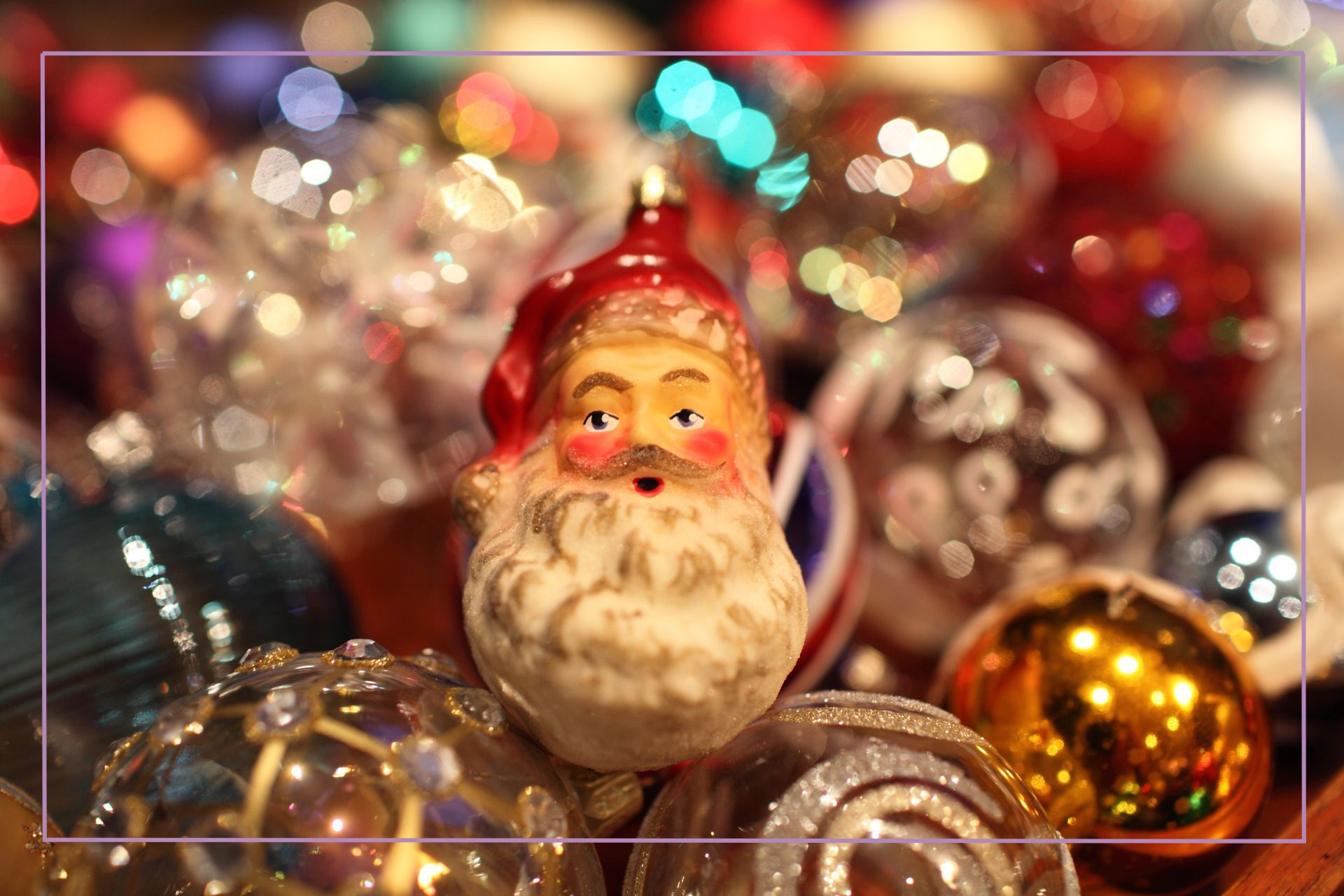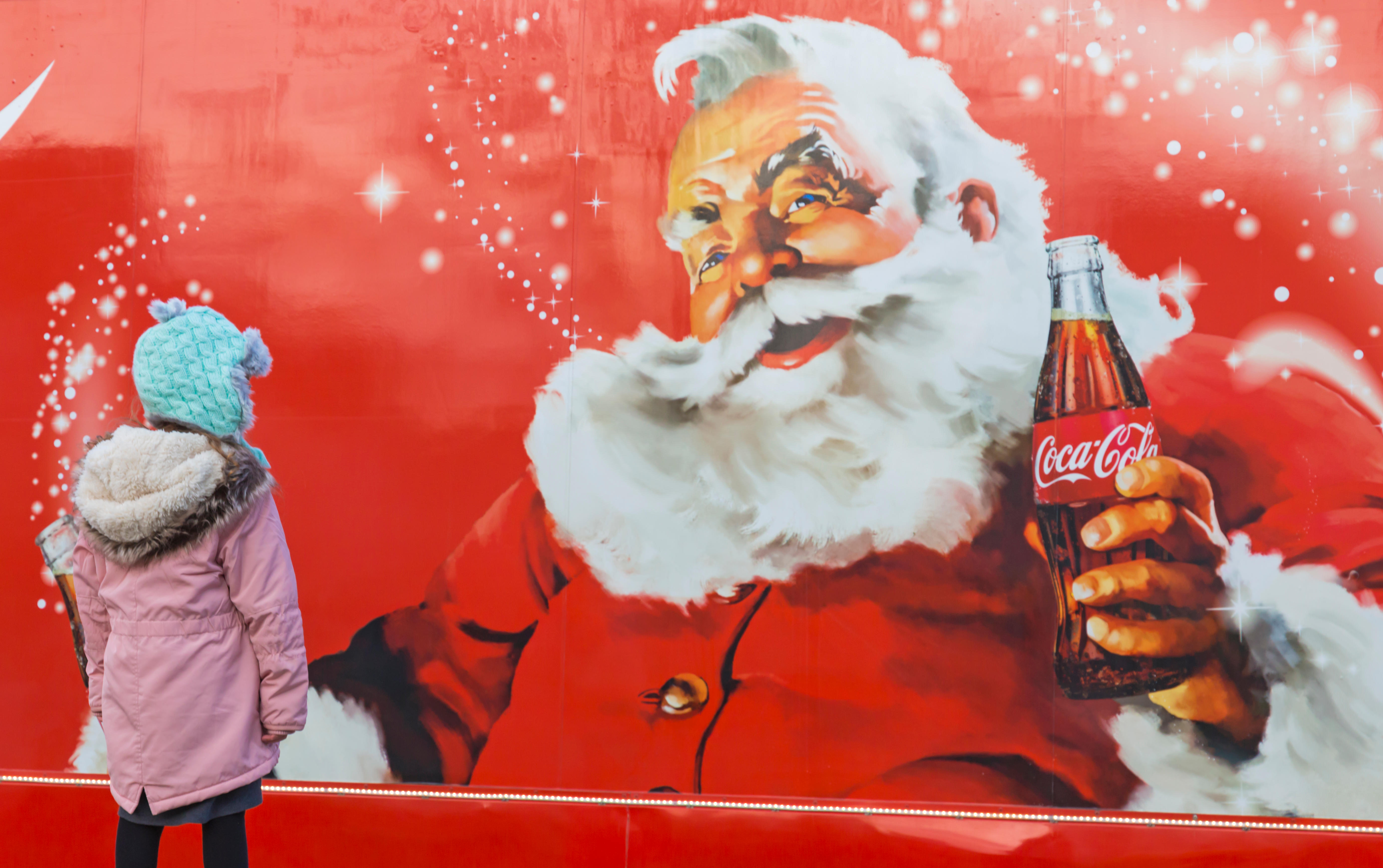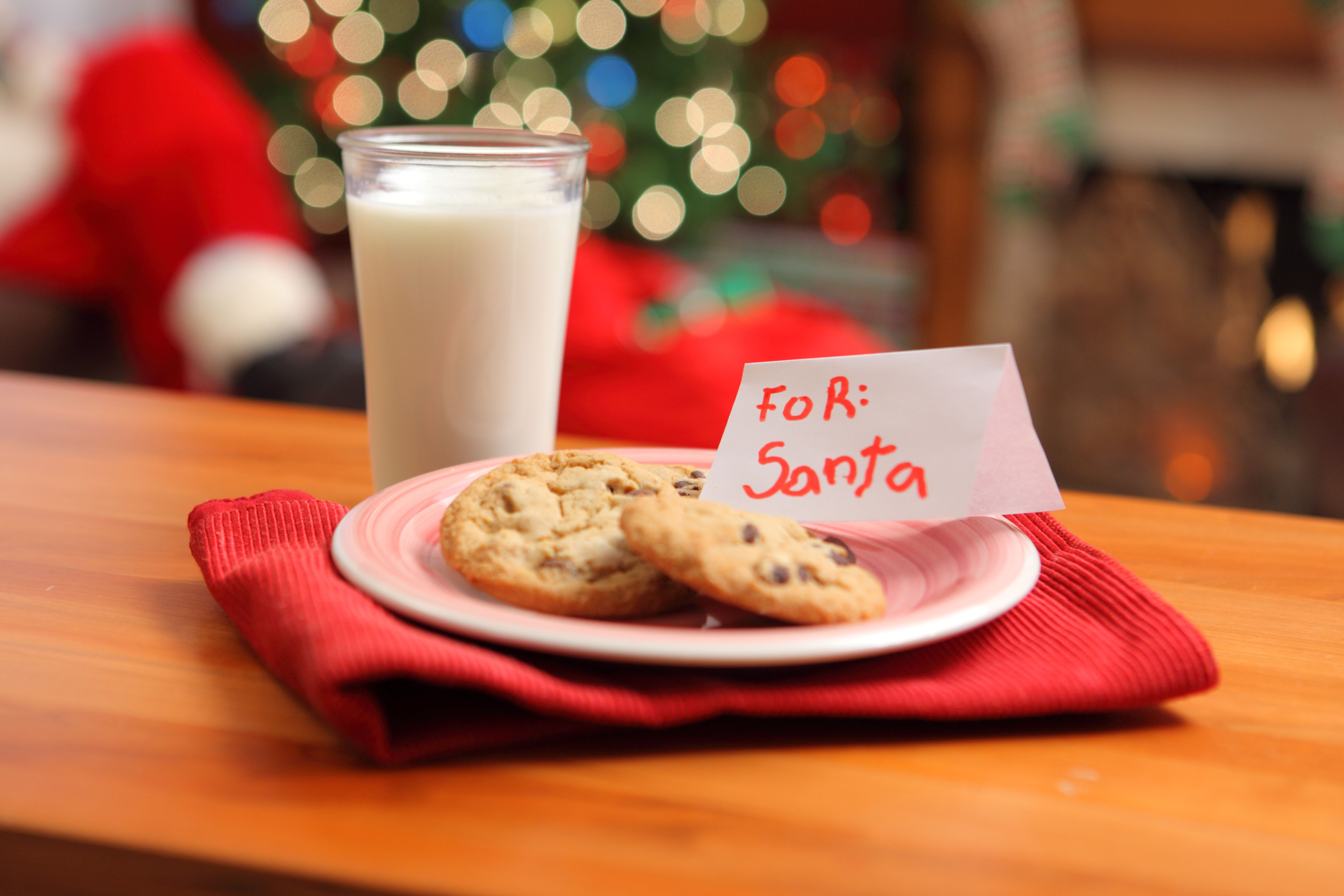
Is Santa Claus real? If your children are asking this heavy question, they're not alone. Understandably, kids are curious about the bearded man in red, there's a lot of magic surrounding his existence that they need to know about.
Christmas is one of the most joyful times of the year, shrouded in a little bit of magical mystery. Rudolph chomping on carrots, Santa polishing off his mince pies, and finding Christmas toys wrapped under the tree. Among all this frivolity, many families have their favourite things to do with kids over the holiday period, often games and Christmas traditions that make the best festive memories.
As children get older, they might begin to question how Santa can get around the world in one night, and eat all of those cookies left for him, and whether reindeer do fly, leaving many parents wondering... what should I say? Author of Motherhood Your Way Hollie de Cruz tells us; "I think it is of value to show our children that we are not immune to being a source of untruths. I know I can build trust with my children without needing them to assume my thoughts or beliefs are gospel."
Behavioural Change Psychotherapist Alicia Eaton, also tells us how this questioning is "part of learning how to express their emotions – putting their thoughts and feelings into words," and should be encouraged. To empower you to tackle this topic, we look at how to explain the magic surrounding St. Nick is alive and well, and which answers you might want to give about his existence.
Is Santa Claus real? (spoiler; yes he is)
If children are asking if Santa Claus is real, the simple answer is - yes, he is. The original Santa Claus began life as a monk named St. Nicholas believed to have been born around A.D. 280. His birthplace was Patara, an area of Turkey. Known for his kindness, St. Nicholas gave away much of his wealth, instead choosing to travel and help the sick and poor.
We have the Dutch to thank for bringing the legend of Saint Nicholas, whom they referred to as Sinterklaas (sin-ter-class), to New York and then around the world. Along with introducing the concept of him, the idea of Sinterklaas came with the custom of giving children presents and sweets on December 6 - his traditional feast day.

When Sinterklaas morphed into Santa Claus, there was no clear image of what he might look like. It was cartoonist Thomas Nast, that sketched the first modern Santa Claus images for Harper’s Weekly in 1863. He based them on a description of Santa from the 1923 poem 'Twas the Night Before Christmas.
Coca-Cola then permanently defined the current image we have of him in 1931. Illustrator Haddon Sundblum depicted him as the bearded older man we all know and love, kitted out in a red and white suit, for a Coca-Cola Christmas promotion.
The image used in Coca-Cola advertisements, is the one that endures to this day. There you have it - history tells us that Santa Claus really is a real person. His existence is based on a benevolent Saint, who used his selflessness to do good for others.
"Knowing Santa began life as a real person really helped my children understand the magic of his existence never really ends."
Mum-of-three, Michelle
Mum-of-three Michelle told us she uses Santa's origin story to keep the magic alive for her older children. She said "Knowing Santa began life as a real person really helped my children understand the magic of his existence never really ends.
"The idea of him and the customs surrounding him might have morphed over the years, but my older children understand their role is to spread his message of the importance of selflessness and giving. This is what keeps him going, even when physical manifestations might alter over time."
Hollie agrees; "The world of imagination and make-believe cultivates everything from emotional resilience, to cognitive development to critical thinking. Entering and embracing it gets your child ready for the next level of understanding, and the levels of inquiry that follow."
Kids are curious and that’s okay - here’s how to answer
Behavioural change Psychotherapist Alicia Eaton told us to remember there is no right or wrong respond to questions about Santa, and to answer in a way that feels right for you and your family. She suggests telling children that the idea of Santa means different things to different people.
Parents can begin this narrative early on when children are very small, to enforce the concept of Santa being steeped in real legend and history. When questions about his existence arise, children can be told that everyone is Santa, and those who celebrate Christmas come together to keep that message alive in a collaborative way.
Mum-of-three and author of Motherhood Your Way, Hollie de Cruz, agrees. In a post she shared on Instagram recently she wrote: "I don’t think we can actually overstate the benefits of embracing imaginative and make-believe realms in early childhood. In fact, I wonder if we can sometimes be at risk of being over-pragmatic when it comes to early childhood, and in doing so sterilise a fantastical landscape and the skills it can cultivate."
Mum-of-three Sarah told us this is how she approached the situation with her son when he began to ask questions. "I explained that a man coming down the chimney after being pulled around the world by a sleigh is just part of the story," she said.
She continued "He was a little disappointed, but I told him that's how the idea of giving selflessly is shown to young children, in a way they'd understand. I then said anyone could be Santa, and he'd been given the job of passing on the magic to his younger brother and sister. He was delighted to know he is now part of a big Santa team, and has taken to this role with gusto."
Alicia Eaton recommends encouraging children to write down their thoughts and feelings about Santa, to help them work through what they've been told about him "This process is very similar to 'journaling' - the benefits of which are well known," she said.
She adds that this is also the perfect time to expand on the idea of gratitude with your children. When they've written their thoughts about what he means to them, ask them to write letters of thanks for their gifts, to their concept of Santa. If letter writing isn't possible, there are other ways this can be done.
"Technology can come in handy too," Alicia said, adding "Take a video of your child on your phone saying thank you. You can then send it as a text message or email to your child's version of Santa." This is both a fun family activity and a way children can learn the notions of gratitude and keep the magic going.

Santa Claus facts
- Santa's sleigh is the fastest vehicle in the world - To make it around all the children on the planet in one evening, the sleigh needs to move at approximately 1,800 miles per second!
- Santa has an official pilot's license to drive his sleigh - Assistant Secretary of Commerce for Aeronautics William P. MacCracken gave Santa his official pilot’s license in the USA on December 24, 1927. He was also given a series of maps and promised that runway lights would shine brightly to help his journey around the world.
- Santa has been issued a Canadian passport - In 2013, Santa was presented with a Canadian e-passport from Canadian Immigration Minister, Chris Alexander.
- He has many other names - We already know the Dutch call him Sinterklaas, but he's also known as Kris Kringle, Germans call him Der Weihnachtsmann (Christmas Man) and in France, he's known as Père Noël (Father Christmas).
- He hasn't always come down the chimney - Santa would've traditionally used other methods to leave his presents in your house. The suggestion he used chimneys came from Washington Irving's 1812 story Knickerbocker's History of New York - Irving saw him arrive this way one night.
- There's still some debate over where he lives - He lives in the North Pole, but the precise location is shrouded in secrecy. Nordic legend would have us believe he lives on a hill in Lapland, Finland.
- He doesn't visit Iceland - Wait, what?! Don't panic, they just do things differently there. They have thirteen versions of their own Santa Claus, called the Yule Lads. They still hand out presents and sweets and have great names like Door Slammer, Spoon Licker, and Sausage Swiper.
- He had a brief career in politics - In an Alaskan town called North Pole, one resident legally changed his name to Santa Claus. In 2015, he was elected to the City Council, meaning Santa Claus did run the North Pole.
- He only revealed his wife in 1849. Versions of Santa have existed for centuries, but nobody knew anything of Mrs. Claus until the 1849 short story, A Christmas Legend. Written by Philadelphia missionary James Rees, this mention of her made everyone aware of her, and the 1889 poem Goody Santa Claus on a Sleigh Ride, really brought her to prominence.
- He likely has more reindeer than the ones we know and love - We all know Dasher, Dancer, Prancer, Vixen, Comet, Cupid, Donner, Blitzen, and Rudolph. However, Santa needs to carry around 400,000 tons of toys on Christmas Eve. He is thought to need around 360,000 magical sleigh-pullers to manage all of that, but that's probably too many names for him to remember.
- He has a magical metabolism - If every child leaves Santa two cookies, it's been estimated he'll consume 374 billion calories and 33,000 tons of sugar if he eats them all. To burn it all off, he'd need to run for around 109,000 years. But Santa is special, and he can eat all the cookies and get away with it.
To fill the festive period with even more cheer, check out our Christmas jokes and groan at the worst Christmas cracker jokes ever. If you get fed up of jokes and want to eat your Christmas tree, you can, with these edible Christmas decoration ideas!







